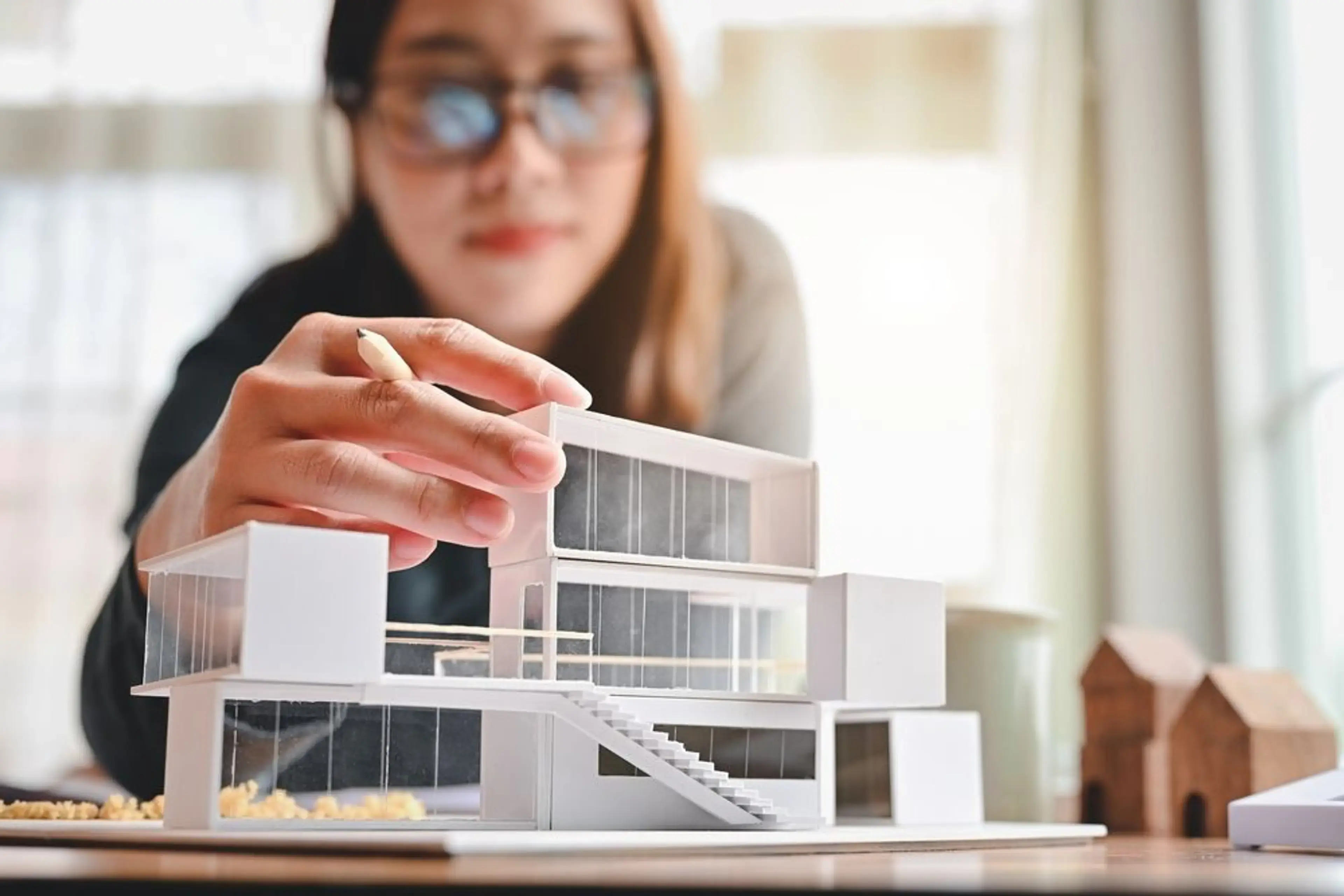Architect Design Movements to Watch in the Coming Year
Architect Design Movements to Watch in the Coming Year
Blog Article
Recognizing the Diverse Career Paths Available for Aspiring Architect
As an aspiring Architect, you have a world of occupation paths waiting for you. Whether you're drawn to typical architecture or the subtleties of sustainable style, there's a niche that aligns with your rate of interests.
Typical Design: Designing Structures and structures
Conventional style focuses on creating structures and frameworks that blend performance with visual appeal. Your styles can mirror cultural heritage, showcasing neighborhood traditions while meeting contemporary requirements.
You'll create skills in drafting, model-making, and site evaluation, allowing you to imagine and connect your ideas efficiently. Engaging with clients, you'll need to understand their vision and convert it right into practical styles.
In addition, constructing codes and sustainability methods are necessary in your job, ensuring your structures are secure and eco pleasant. As you expand in your occupation, you'll discover opportunities in residential, business, or perhaps repair projects, each offering unique challenges. Welcoming standard design leads the way for a fulfilling profession that admires the past while shaping the future.
Urban Preparation: Forming Neighborhoods and Public Spaces
As a hopeful Architect, you can play a crucial duty as a metropolitan planner, transforming exactly how neighborhoods engage and work. By utilizing neighborhood engagement strategies, you'll guarantee that homeowners have a voice in forming their environment. Plus, incorporating sustainable style principles will certainly help create rooms that not just fulfill today's needs yet also protect the future.
Function of Urban Planners
While numerous might believe of designers as the sole dreamers behind buildings, urban organizers play an important function in shaping the wider landscape of areas and public spaces. By collaborating with different stakeholders, you'll help design parks, transport systems, and property locations that promote social communication and availability. Your experience in spatial style and community characteristics allows you to envision future development while preserving social heritage.
Community Interaction Strategies
Efficient community involvement approaches are vital for city planners to assure that the voices of residents are heard and valued in the planning procedure. To cultivate meaningful discussion, you need to prioritize open online forums and workshops where area members can reveal their ideas and concerns. By proactively paying attention and integrating responses, you'll develop rooms that reflect the community's requirements, ultimately leading to more sustainable and effective urban environments.
Lasting Design Concepts
When developing city rooms, incorporating lasting layout principles is crucial for producing settings that prosper both ecologically and socially. You need to begin by concentrating on energy effectiveness, making use of products that minimize waste and advertise recycling. Consider integrating eco-friendly spaces, like gardens and parks, to enhance biodiversity and enhance air quality. Advertising walkability and public transport can reduce dependence on cars and trucks, fostering a healthier community.
Designing with water conservation in mind is also key-- think of rainfall yards and permeable surface areas to manage stormwater. Involving neighborhood participants throughout the preparation process assurances that the spaces you produce meet their requirements and encourage social interaction. By welcoming these concepts, you'll add to lively, lasting city landscapes that benefit every person.

Landscape Architecture: Producing Sustainable Outdoor Environments
As you explore landscape architecture, you'll uncover essential design concepts that develop practical and beautiful outside spaces. Lasting techniques play a crucial duty in guaranteeing these atmospheres grow while lessening ecological effect. Plus, you'll locate a variety of career opportunities that permit you to make an actual distinction in just how people engage with nature.
Style Concepts in Landscape
Understanding layout concepts in landscape design is crucial for developing sustainable outdoor environments that balance with nature. You'll need to contemplate aspects like percentage, equilibrium, and scale to ensure your styles feel natural and welcoming. Furthermore, pay attention to seasonal modifications, designing with materials that enhance the surroundings year-round.
Sustainable Practices Summary
Lasting methods in landscape design not only concentrate on aesthetic appeals but additionally focus on environmental health and wellness and source conservation. By integrating indigenous plants, you improve biodiversity and lower the need for chemical plant foods and chemicals. Executing effective watering systems helps preserve water and minimizes drainage, safeguarding close-by ecosystems. You can design areas that advertise soil wellness, such as making use of natural materials and practicing permaculture principles. Additionally, including eco-friendly infrastructure, like rain yards and permeable pavements, help in stormwater monitoring and reduces metropolitan warmth. You contribute to a much healthier world and provide rooms that cultivate community connection when you develop outdoor settings with sustainability in mind. Inevitably, these practices ensure your designs benefit both people and the atmosphere for several years to come.
Career Opportunities Expedition
With a strong structure in lasting methods, landscape style uses a selection of profession courses that enable you to make a meaningful effect on the setting. You might function as a landscape developer, creating aesthetically pleasing and functional exterior rooms, or focus on ecological remediation, assisting to revitalize broken ecological more info communities. Urban planners commonly collaborate with landscape architects to create eco-friendly areas in urban settings, improving city livability. If you're enthusiastic concerning education, consider ending up being a landscape style instructor, inspiring future generations. Furthermore, you might work with nonprofits concentrated on ecological sustainability or participate in research study to introduce new methods. Each course not just shapes gorgeous environments yet also cultivates a healthier world for future generations.
Sustainable Design: Concentrating on Eco-Friendly Practices
As you explore your occupation in architecture, welcoming environmentally friendly practices can establish you apart in a competitive area. Sustainable design concentrates on creating buildings that minimize ecological influence while improving passenger health. By integrating sustainable materials, energy-efficient systems, and sustainable building techniques, you'll contribute to a greener future.
Start by acquiring knowledge of eco-friendly qualifications like LEED or BREEAM, which can reinforce your credentials. Consider how all-natural light, air flow, and thermal effectiveness can maximize layout. Collaborate with designers and environmental consultants to introduce remedies that lower waste and preserve sources.
Do not fail to remember the value of community involvement-- interesting local stakeholders can motivate layouts that integrate with the atmosphere. As customers progressively focus on sustainability, your expertise in green practices will certainly not just attract jobs however additionally fulfill your passion for liable design. Welcome this critical facet of the occupation, and watch your occupation prosper.
Historic Preservation: Shielding and Bring Back Social Heritage
While you start on your architectural journey, think about the essential duty of historical conservation in keeping our social heritage. This area concentrates on the security and restoration of significant read more buildings, sites, and structures that tell the stories read more of our past. By engaging in historic conservation, you'll assist safeguard the building legacy that forms neighborhood identity.
As a historical conservation Architect, you'll analyze historical significance and evaluate the condition of structures. You'll work carefully with guardians and chroniclers to guarantee authentic restoration methods are employed. This career course permits you to blend imagination with research study, enabling you to develop options that appreciate initial materials and craftsmanship.
Your work not only adds to sustainability by recycling existing buildings yet additionally promotes a feeling of satisfaction within communities. Embracing this path will certainly assist you end up being a guardian of history, maintaining the tales and visual appeals that enrich our lives.
Interior Style: Enhancing Indoor Spaces
Historical preservation and interior style both share a dedication to enhancing the built environment, but they concentrate on various facets. While historical preservation stresses keeping a structure's social and historic worth, interior style zeroes in on enhancing interior areas for functionality and looks.
As a hopeful Architect, you'll find that indoor style allows you to mix imagination with technical skills. You'll make areas that not only look great however likewise advertise comfort and performance. This field involves comprehending exactly how light, color, and materials connect within an area, influencing mood and functionality.
You'll work with different tasks, from property homes to industrial offices, guaranteeing that each atmosphere satisfies the demands of its occupants. By focusing on individual experience, you can transform insides right into inspiring and functional spaces, making a substantial effect on how individuals connect with their surroundings. Accept the chance to boost indoor settings and shape the means people function and live.
Industrial Style: Combining Performance With Appearances
Commercial design plays an important function in developing items that effortlessly mix aesthetics with functionality, guaranteeing that what you make use of day-to-day is not only visually enticing yet also useful. As an ambitious Architect, you could immerse on your own in this field, concentrating on designing everything from furnishings to customer electronic devices. Your work entails comprehending individual demands, products, and manufacturing processes, allowing you to produce cutting-edge solutions that improve daily experiences.
In industrial design, you'll frequently team up with marketing professionals, suppliers, and engineers, ensuring that your styles are not only attractive but additionally possible. You'll find out to stabilize form and function, prioritizing functionality without compromising style. By honing your abilities in laying out, 3D modeling, and prototyping, you'll be well-appointed to bring your ideas to life. This career path offers a vibrant setting where imagination fulfills practicality, making it a rewarding choice for designers thinking about forming the products of tomorrow.
Regularly Asked Concerns
What Educational Certifications Do I Required to Become an Architect?
To become a designer, you'll need a specialist degree in style, generally a Bachelor's or Master's. Additionally, you'll have to finish a teaching fellowship and pass the Architect Enrollment Exam to exercise lawfully.
Are There Certification Requirements for Various Architectural Occupation Paths?
Yes, there're accreditation requirements for various architectural paths. Architect. You'll require to pass examinations, total internships, and in some cases seek specialized training, depending upon your selected emphasis, like landscape design, metropolitan style, or historic preservation
What Software Skills Are Essential for Engineers Today?

Exactly How Can I Gain Practical Experience While Examining Style?
You can gain practical experience by interning at building firms, joining style competitors, volunteering for neighborhood jobs, or collaborating with classmates on real-world projects. These chances boost your skills and develop beneficial connections in the industry.
What Task Opportunities Exist Outside Conventional Architecture Firms?
You can check out numerous task possibilities outside standard design firms, like urban preparation, interior decoration, landscape style, building and construction management, property advancement, and even functions in sustainability consulting. Each offers special difficulties and benefits.
Whether you're drawn to traditional design or the subtleties of sustainable style, there's a niche that lines up with your interests.When creating metropolitan areas, incorporating lasting layout principles is important for creating environments that prosper both ecologically and socially.As you explore landscape architecture, you'll discover important style concepts that produce gorgeous and practical outside rooms.Recognizing layout principles in landscape design is necessary for developing lasting outside settings that harmonize with nature.In commercial style, you'll frequently team up with manufacturers, designers, and online marketers, making sure that your styles are not only gorgeous however additionally possible.
Report this page